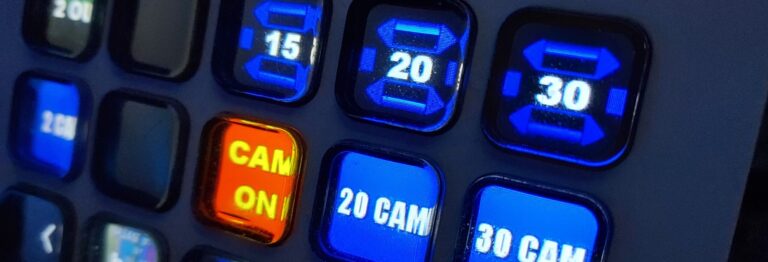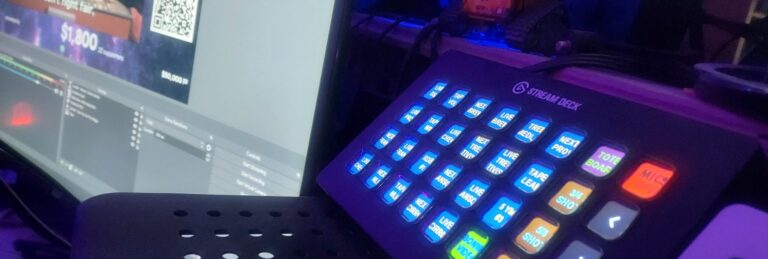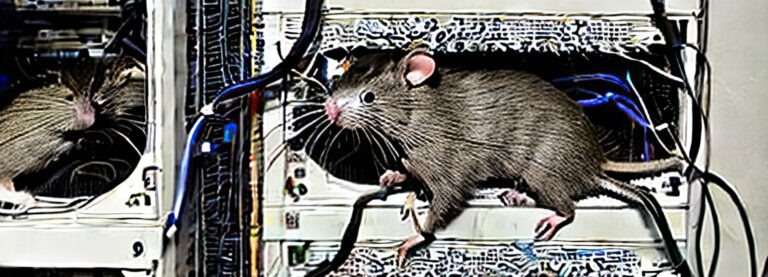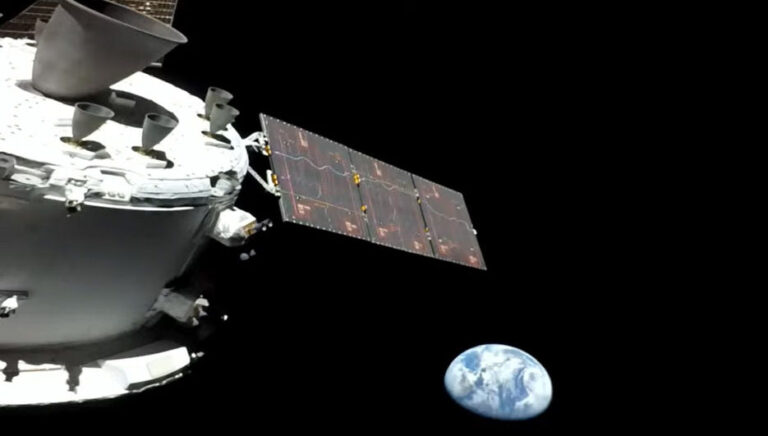“The wheel turns, does it not, Ambassador?”
Okay, that line’s from the first episode of Babylon 5, and at this point, Babylon 5 is about the only thing that hasn’t been recreated in fan-film form (though if you’re willing to put up with cheap visuals, there’s a clip in my multimedia section on the right-hand side of your screen proving that even the space battle stuff wouldn’t be completely impossible). But it fits the situation so well, I kinda have to use it.
In the 1990s, with Doctor Who cancelled and no new Doctor Who on the horizon, it fell to the fans to keep the saga alive. Fan writers went pro with Virgin Publishing’s New Adventures. Fan actors like Nicholas Briggs and Gary Russell produced audio plays set in the Doctor Who universe, making barely-legal use of existing sound FX records from the series itself, and not realizing they’d both be doing that as a full-time business venture with an actual BBC license (and completely legal use of those sound FX) by the end of the decade. And would-be movie makers like Bill Baggs and Keith Barnfather started taking little bits and pieces of the Doctor Who mythos and making their own movies.
UK copyright law has an interesting loophole that allowed this to happen without these amateur filmmakers getting sued into the 16mm film era. While the BBC owns the copyright to Doctor Who, the copyright in individual villains, aliens and companions lies with the writers who first created them. In other words, the BBC doesn’t own K-9 – Bob Baker and Dave Martin do. The BBC doesn’t own the Sontarans – the estate of the late, great Robert Holmes does. And so on. So these amateur filmmakers couldn’t even touch the Doctor, the TARDIS, or the Time Lords, or certain characters who had been created by the show’s producers (such as certain companions; K-9 wasn’t originally intended to be an ongoing companion, and in fact an ending of his debut Doctor Who adventure was filmed that left him behind). So the Sontarans, Draconians, the Brigadier, Sarah Jane Smith, and others got their own adventures sans the Doctor. (And just as often, other characters in their adventures would wind up being played by former Doctors and former Companions; Sophie “Ace” Aldred was a mainstay of the amateur film circuit.) Cheaper video technology and the emergence of desktop CG and editing made this possible, and even after the 1996 Doctor Who movie starring Paul McGann the fans’ cameras kept rolling.
It’s funny: Doctor Who is now riding high, with its last renewal giving it two more seasons. And Star Trek is, at least temporarily, history – and now it’s Trek that’s in the hands of the fans. The most visible of these endeavours, Star Trek: New Voyages, is making serious waves by inviting former writers and actors of real Star Treks past to join them – and they’re being taken up on their offer. George Takei and Grace Lee Whitney have agreed to star in the next “episode” produced by the team of amateur actors and filmmakers at New Voyages HQ in Ticonderoga, NY, and they’ll be taking part in a story scripted by TNG writers Michael Reaves and Marc Scott Zicree. And this comes right after another “episode,” currently in post-production, written by D.C. Fontana and starring Walter Koenig, due to be released for free download later this year. David Gerrold is also writing two scripts for the New Voyages, one a rewrite of a never-produced TNG season 1 script, and the other a sequel to The Trouble With Tribbles.
Wow. Now, to be fair, there are parallels here – pro writers like Terrance Dicks and Marc Platt participated in Doctor Who fan films, Mark Ayres scored some of them, and at least one fan film, The Airzone Solution, told a story completely unrelated to Who mythos but starring every Doctor from Jon Pertwee forward, with the exception of Tom Baker.
Needless to say, the shelf of Doctor Who “spinoff” videotapes on my shelf at home gives away how fond I am of these things. I’ve only just started watching the Star Trek: New Voyages stories, and while there’s an inherent fannish goofiness to them – Captain Kirk is played by an actor whose history includes a steady gig as an Elvis impersonator – I have to admire the craftsmanship of their meticulous reproduction of the classic Enterprise bridge, their uniforms, and their CG effects – roughly on par with early Babylon 5 (aha, there is a connection!) and light years ahead of what some of my friends and I used to do when we were cooking up our own fan-made spoofs in the early 90s.
There’s always going to be a debate about whether or not these people could be spending their time better coming up with something original, and just how far over the copyright lines they’re stepping. That’s a valid debate. But some of them, I suspect, just simply want to tell their own Star Trek stories. There’s a reason Who fans kept shining a light on little corners of the Whoniverse: they love the settings, characters, and backstories. They couldn’t even so much as mention the Doctor, but they could continue to explore the universe. The Trek fan flicks are a similar phenomenon; fan projects other than New Voyages are looking at original crews on ships and missions we haven’t seen before, so in a sense, much of the Trek fan film community is doing what the Who fans were doing ten years ago. The New Voyages gang, for good or ill, is getting so much attention precisely because they’re leaping right across that line and saying that these are, in fact, the voyages. Time will tell if it catches up with them in a legal sense; for the moment Paramount is turning a blind eye because they’re offering their productions, made with thousands of hours of volunteers’ time, as free downloads.
Then of course, there are the Lucasfilm-sanctioned Star Wars fan film competitions, where the vaults of Lucas’ sound effects are opened and things are left up to the fans’ twisted imaginations. In a sense, Lucasfilm has probably taken the best proactive approach possible that doesn’t involve alienating the fan base. Not that any other sectors of fandom are waiting for the intellectual property holders of the objects of their respective adorations to adopt a similar policy, mind you.
I guess what has me so fascinated with this is the amount of skill and creativity and, yeah, sometimes, just pure cheek that goes into these things. I admire that. It’s a better use of everyone’s time – both the fans making the stuff and the fans watching the stuff – than, say, re-editing Phantom Menace so there’s less Jar Jar.… Read more

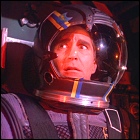 I wish to report a troubling finding: for me, watching an episode of
I wish to report a troubling finding: for me, watching an episode of 
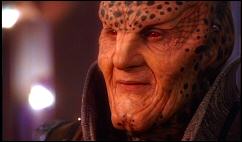 I think I’ve been failing spectacularly to explain to anyone who isn’t already a fan of Babylon 5 why the death of Andreas Katsulas, who played Narn nemesis-turned-nobleman G’Kar, has hit me like a kidney punch. Of course, I sometimes have a hard time explaining to non-fans why I dug B5 so much in the first place, so maybe it’s more indicative that my powers of persuasion, or communication on the whole, are somehow diminished at a quarter of four in the morning. (Y’think?)
I think I’ve been failing spectacularly to explain to anyone who isn’t already a fan of Babylon 5 why the death of Andreas Katsulas, who played Narn nemesis-turned-nobleman G’Kar, has hit me like a kidney punch. Of course, I sometimes have a hard time explaining to non-fans why I dug B5 so much in the first place, so maybe it’s more indicative that my powers of persuasion, or communication on the whole, are somehow diminished at a quarter of four in the morning. (Y’think?)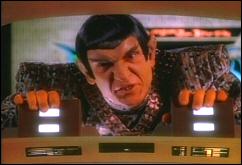 favorite SF character, Commander Tomalok in Star Trek: The Next Generation’s series finale (filmed around the same time as the end of B5’s first season), the previously stoic and menacing Romulan became markedly more G’Kar-esque. (Though to give him credit, it’s not beyond the realm of imagination that someone asked him to play it that way, having watched his work on B5. Though I’m sure no one on the Paramount lot would ever admit to that.)
favorite SF character, Commander Tomalok in Star Trek: The Next Generation’s series finale (filmed around the same time as the end of B5’s first season), the previously stoic and menacing Romulan became markedly more G’Kar-esque. (Though to give him credit, it’s not beyond the realm of imagination that someone asked him to play it that way, having watched his work on B5. Though I’m sure no one on the Paramount lot would ever admit to that.)